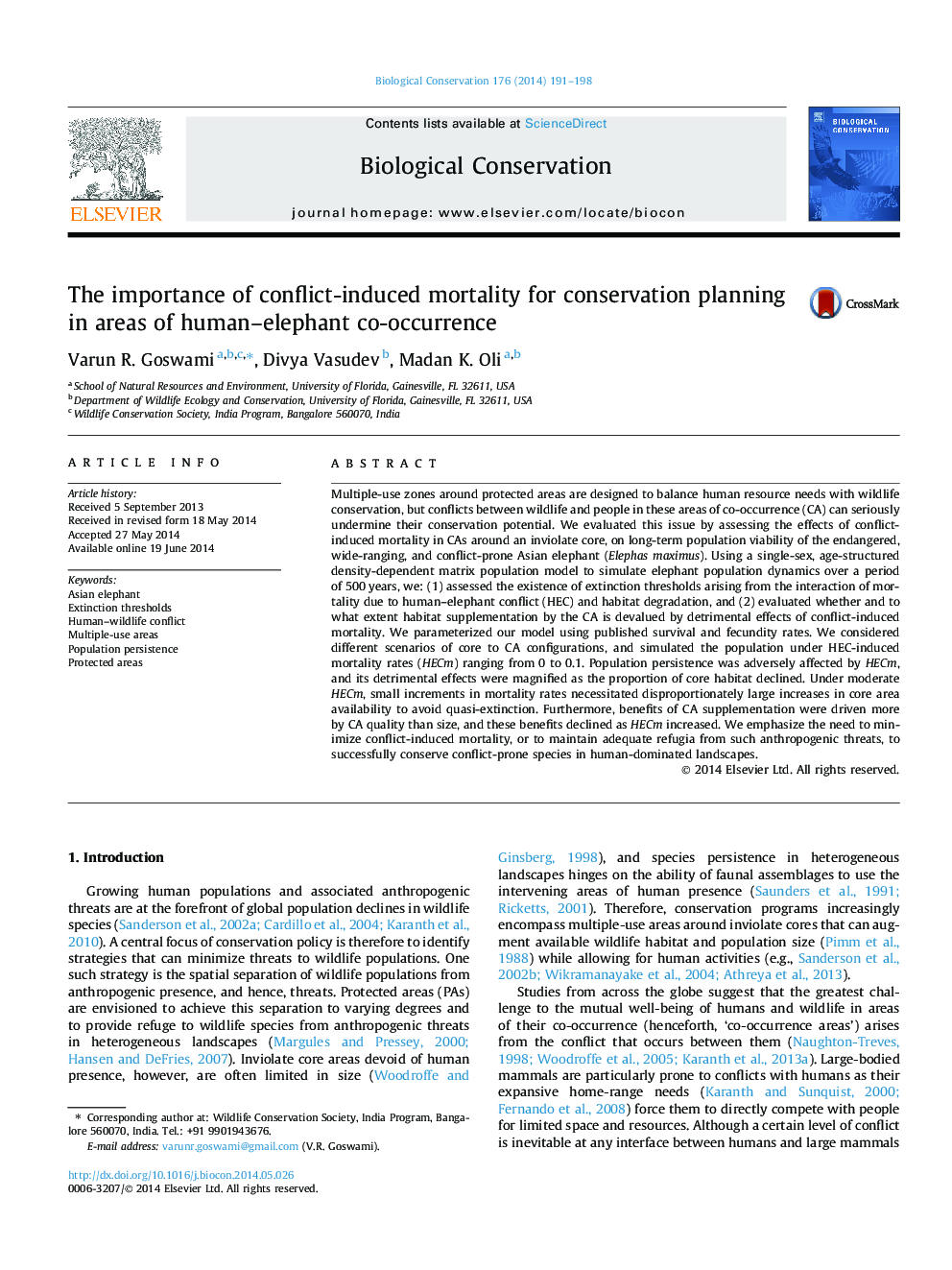| Article ID | Journal | Published Year | Pages | File Type |
|---|---|---|---|---|
| 6299481 | Biological Conservation | 2014 | 8 Pages |
â¢We model effects of conflict-induced mortality and core area loss on populations.â¢We evaluate if human-wildlife conflict devalues co-occurrence areas.â¢Decreased inviolate core accelerates negative effects of human-wildlife conflict.â¢Interaction of core area loss and conflict result in extinction thresholds.â¢Conflict mitigation is essential for conservation in co-occurrence areas.
Multiple-use zones around protected areas are designed to balance human resource needs with wildlife conservation, but conflicts between wildlife and people in these areas of co-occurrence (CA) can seriously undermine their conservation potential. We evaluated this issue by assessing the effects of conflict-induced mortality in CAs around an inviolate core, on long-term population viability of the endangered, wide-ranging, and conflict-prone Asian elephant (Elephas maximus). Using a single-sex, age-structured density-dependent matrix population model to simulate elephant population dynamics over a period of 500Â years, we: (1) assessed the existence of extinction thresholds arising from the interaction of mortality due to human-elephant conflict (HEC) and habitat degradation, and (2) evaluated whether and to what extent habitat supplementation by the CA is devalued by detrimental effects of conflict-induced mortality. We parameterized our model using published survival and fecundity rates. We considered different scenarios of core to CA configurations, and simulated the population under HEC-induced mortality rates (HECm) ranging from 0 to 0.1. Population persistence was adversely affected by HECm, and its detrimental effects were magnified as the proportion of core habitat declined. Under moderate HECm, small increments in mortality rates necessitated disproportionately large increases in core area availability to avoid quasi-extinction. Furthermore, benefits of CA supplementation were driven more by CA quality than size, and these benefits declined as HECm increased. We emphasize the need to minimize conflict-induced mortality, or to maintain adequate refugia from such anthropogenic threats, to successfully conserve conflict-prone species in human-dominated landscapes.
